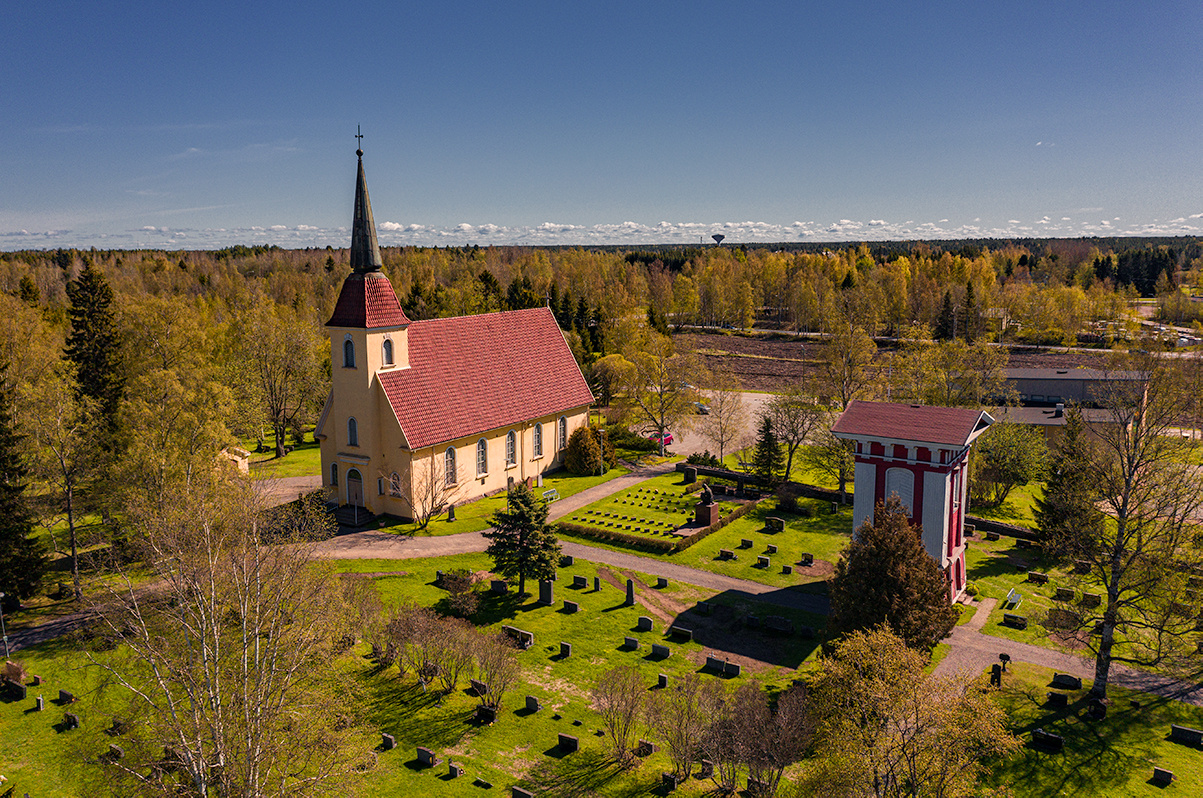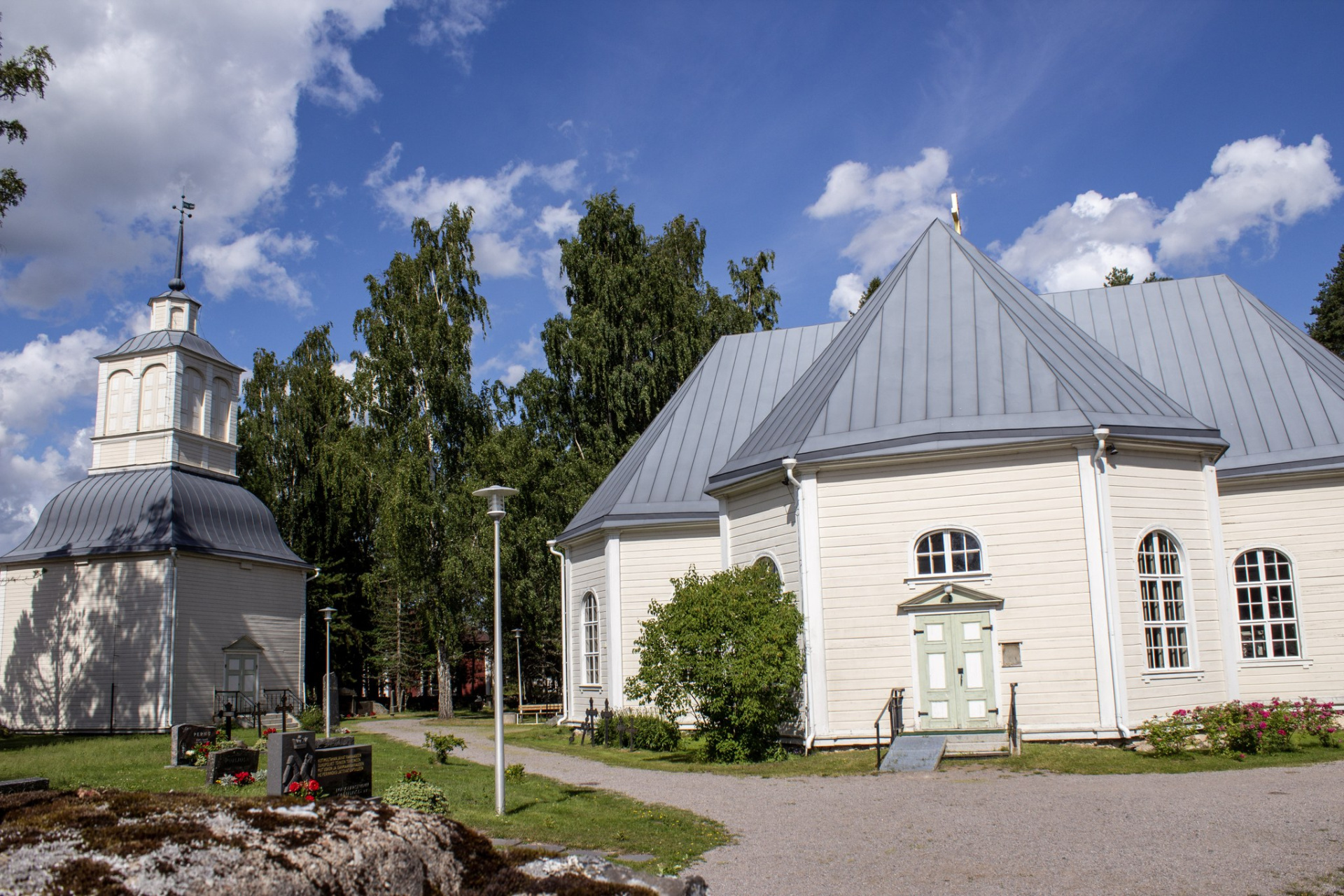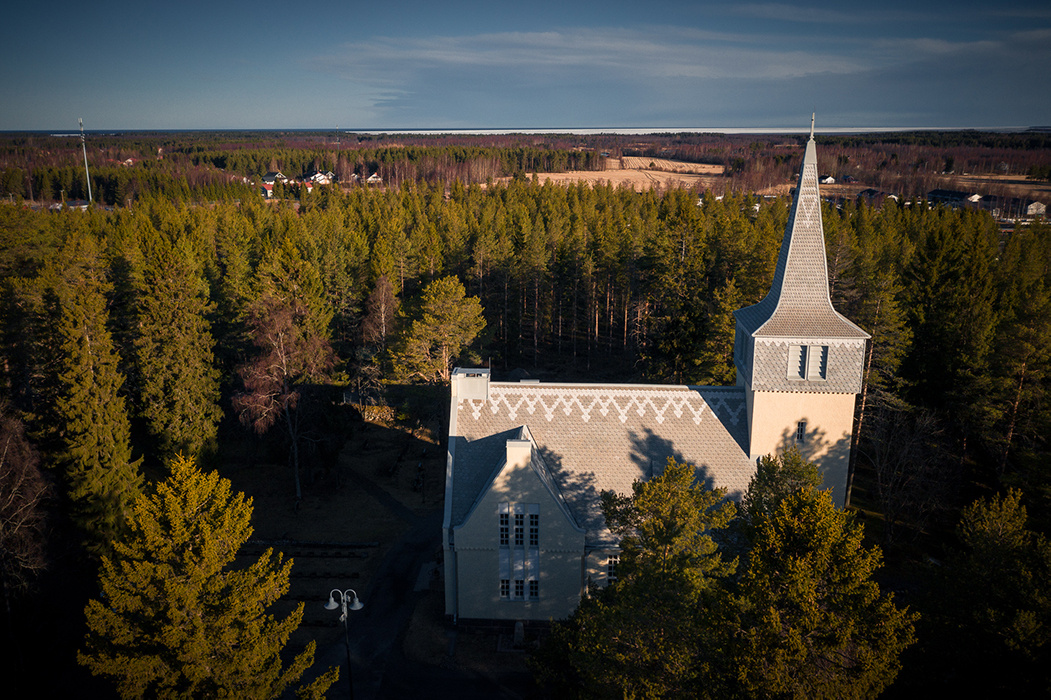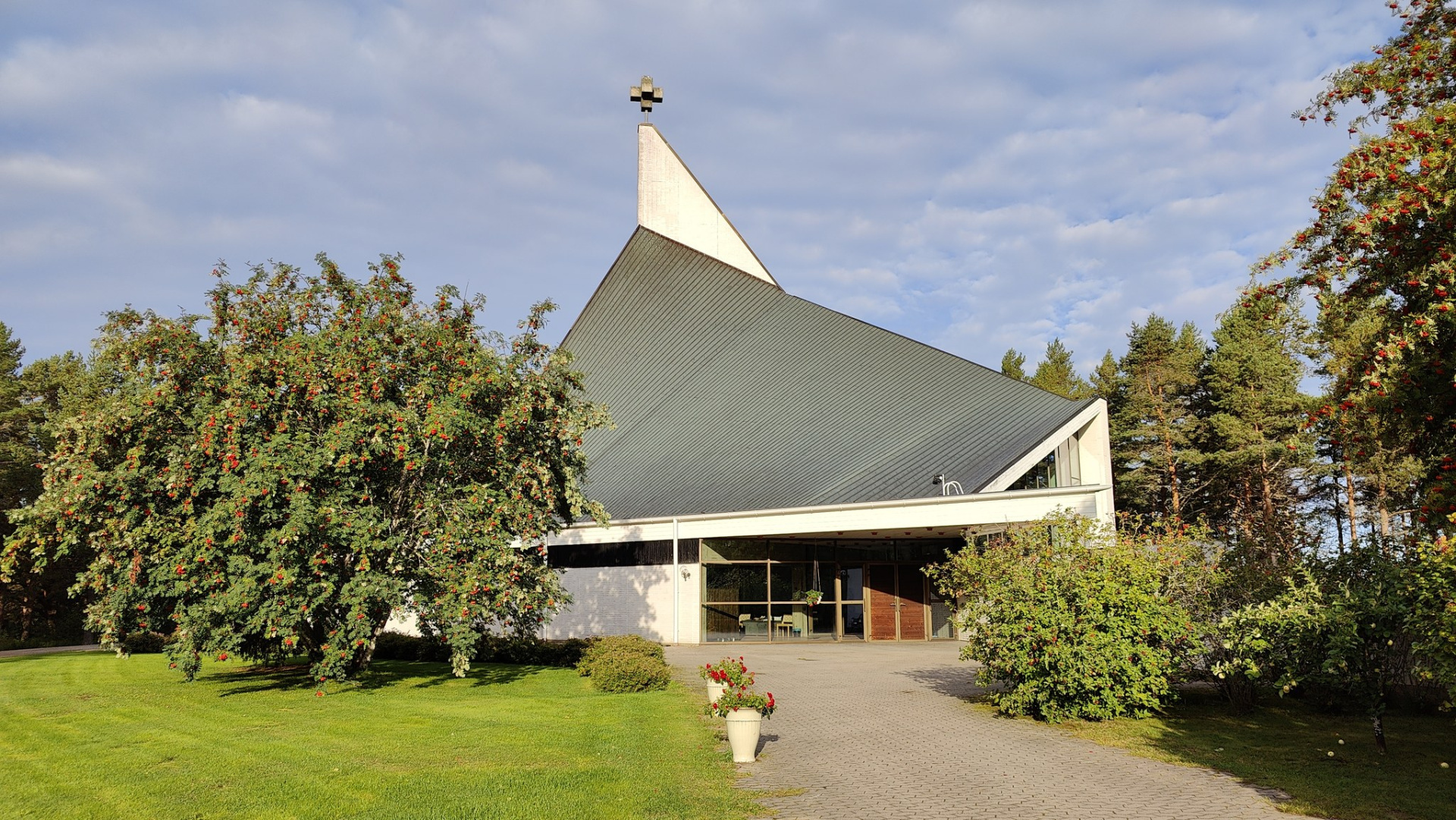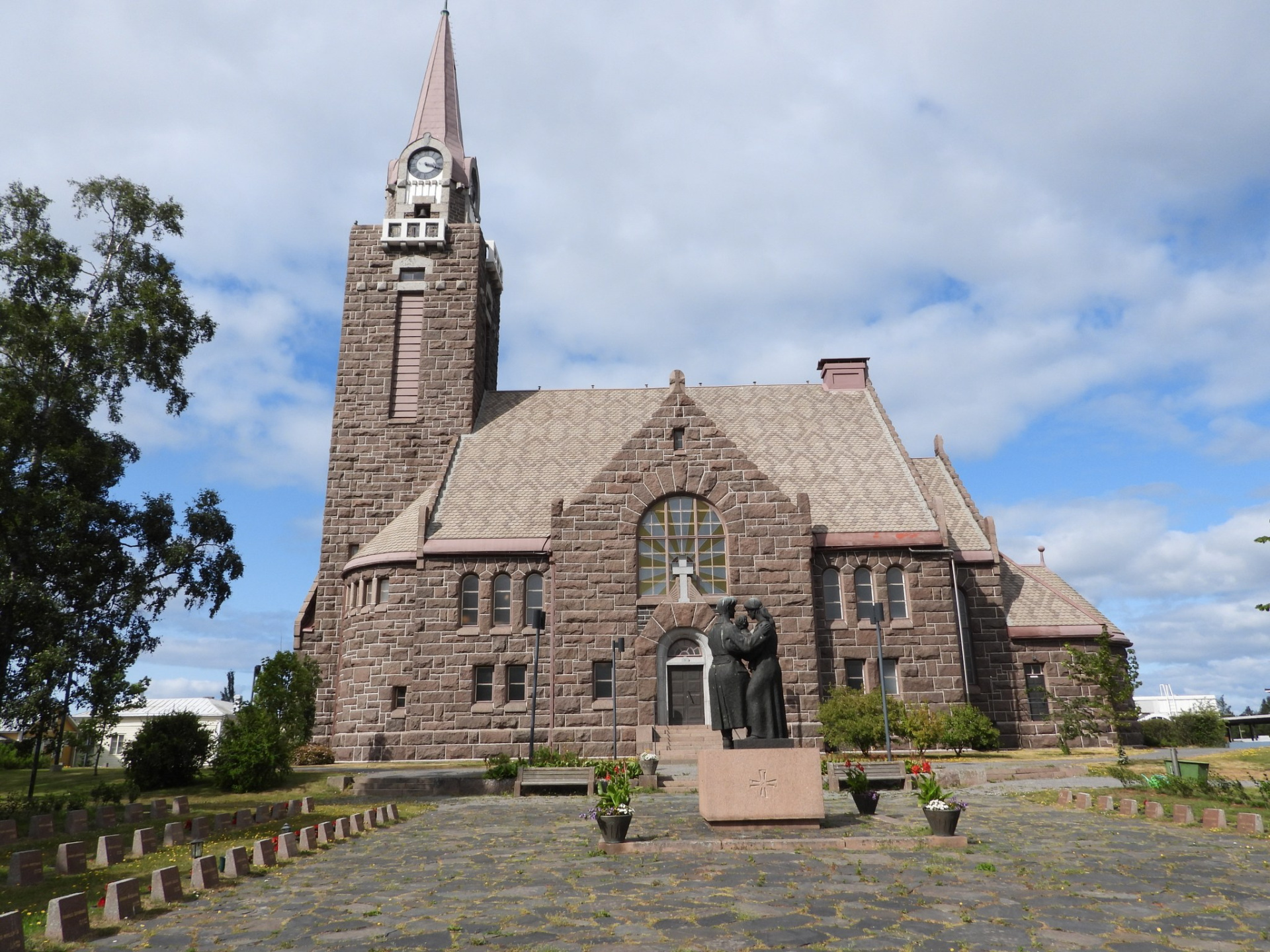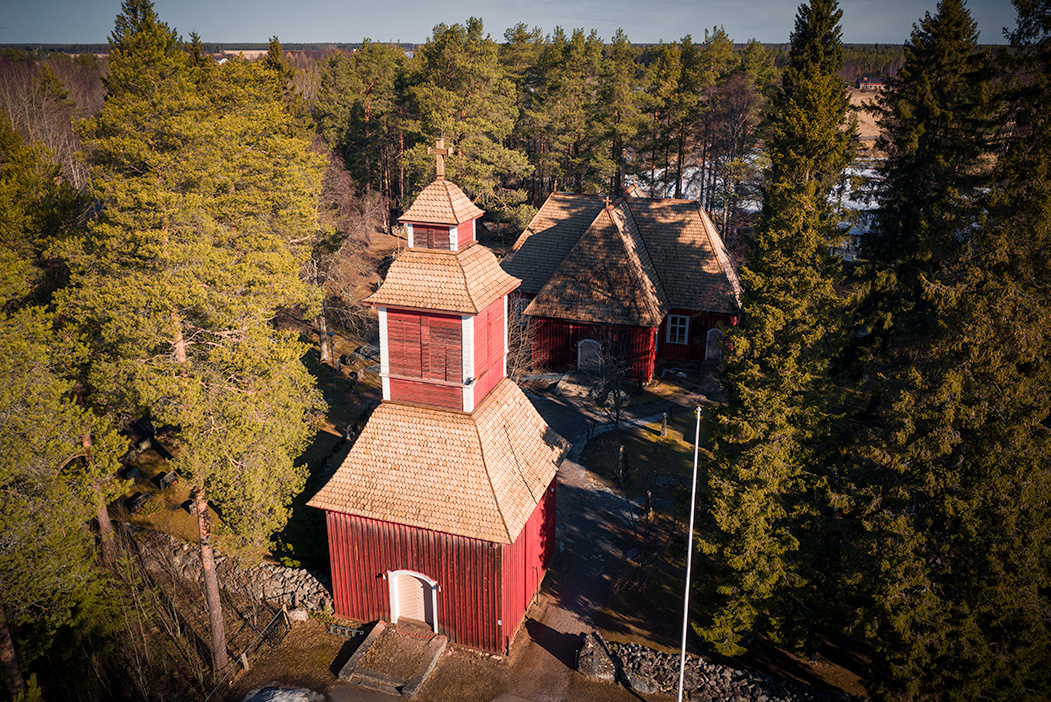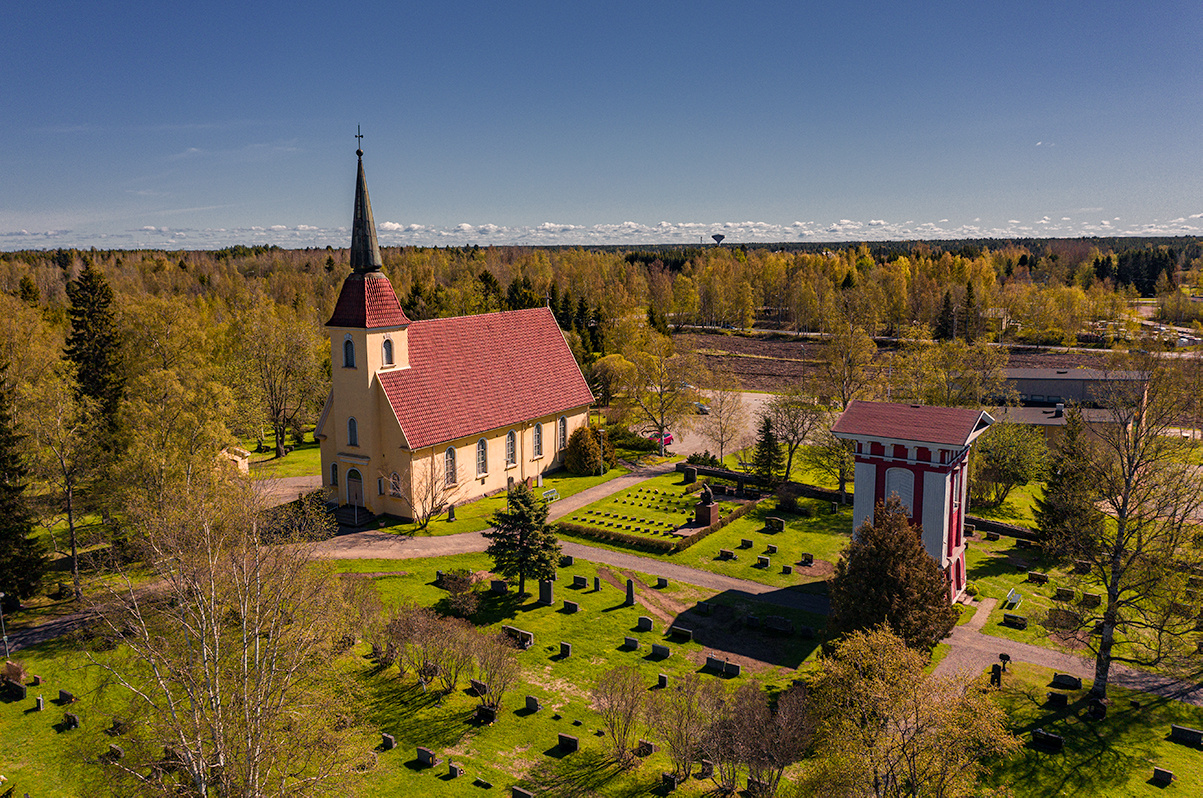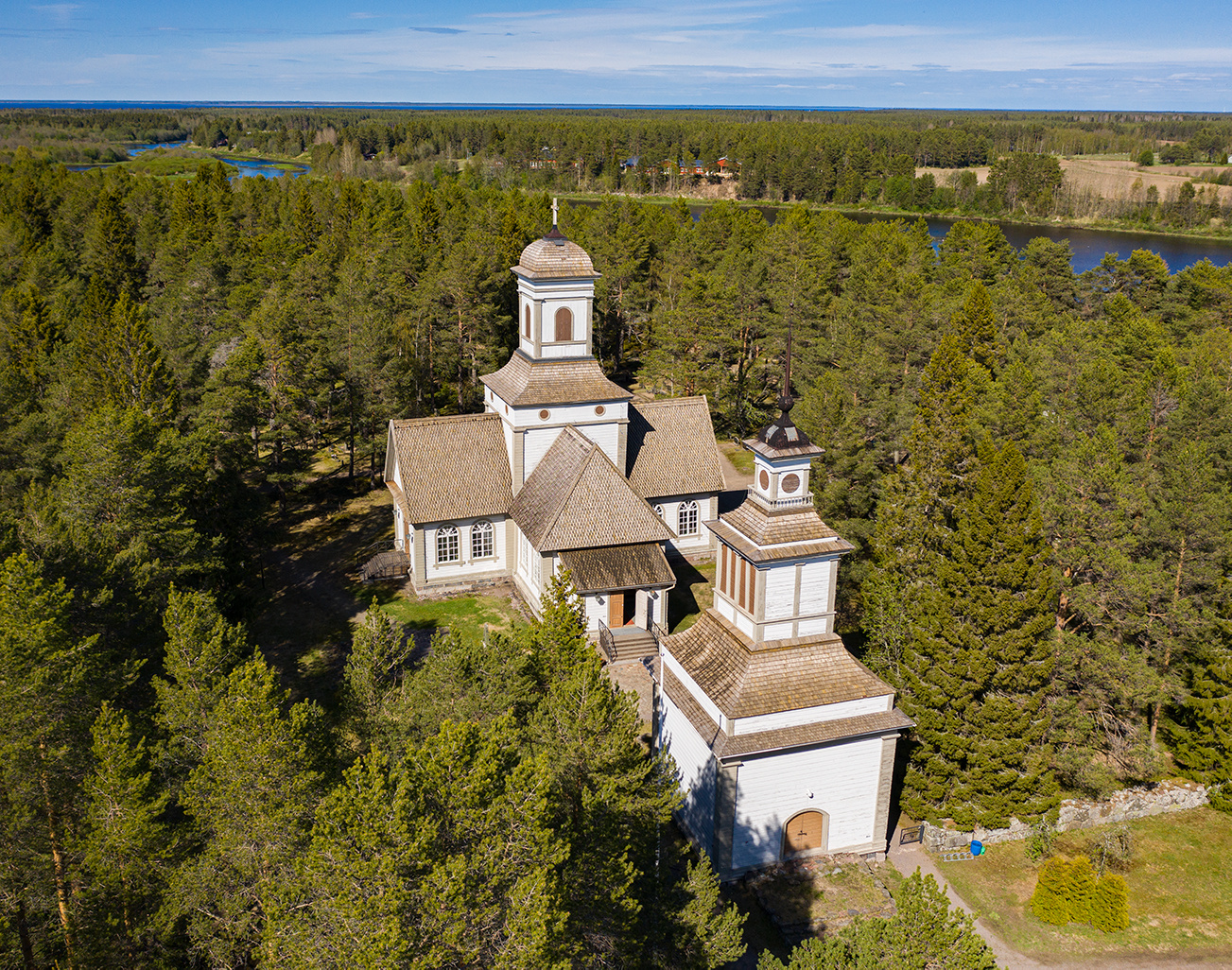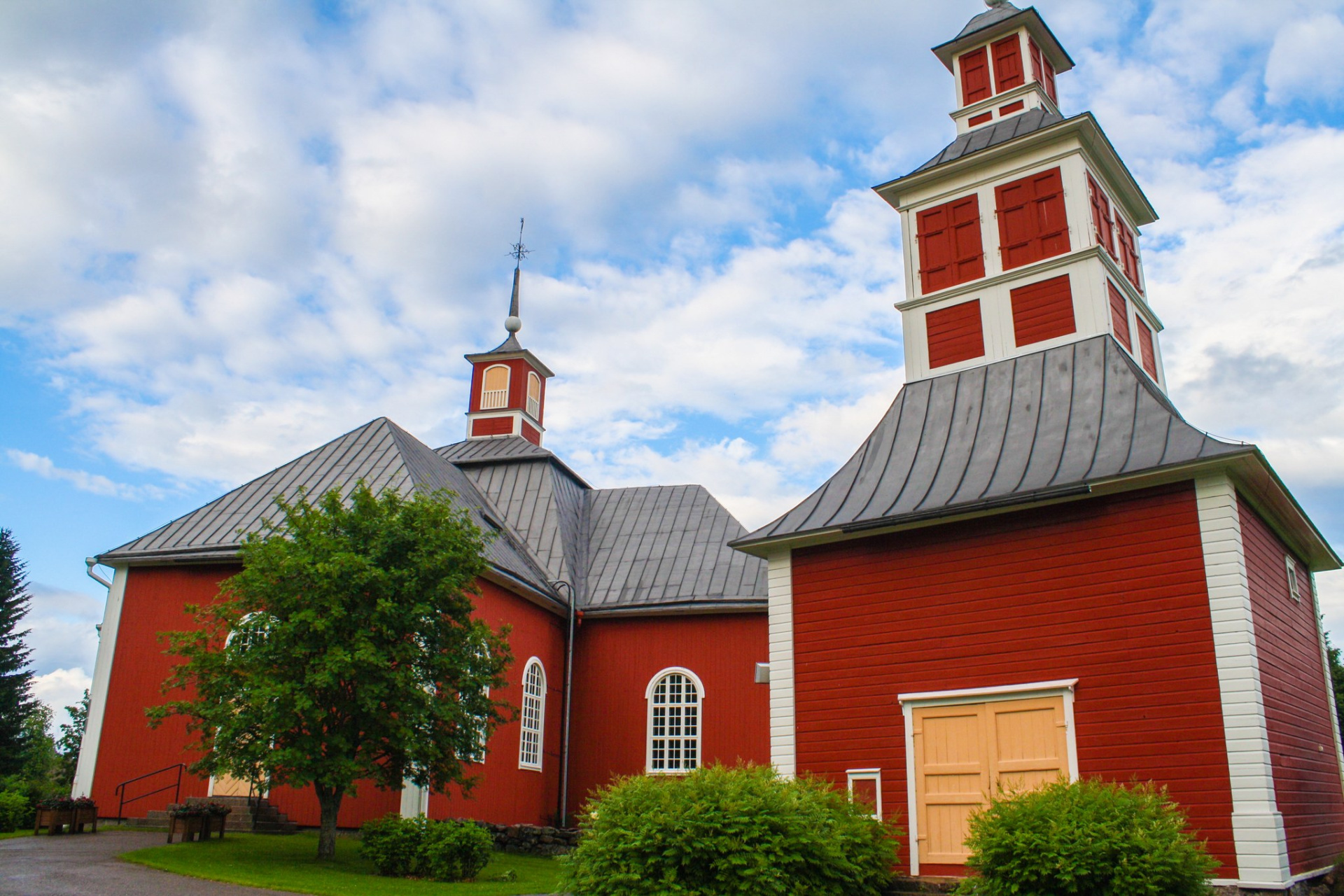Raahe Church of Holy Trinity was completed in 1912, replacing the wooden church built in 1653 that burned down in 1908. Representing National Romanticism and Art Nouveau, most of the granite stones used for the church were quarried from the islands off the coast of Raahe. The chandeliers resemble the ship's railing, fitting for the character of an old maritime town.
Church of Pyhäjoki was completed in 1977. It was designed by Karvala & Silvennoinen after the wooden church, originally drawn by Carl Ludvig Engel, was destroyed in a fire in 1974. This church is the third in Pyhäjoki. The first church was built in the 1500s, and candle chandeliers and a baptismal font from that period adorn the current church. The church combines a modern exterior with an interior that emphasizes sanctity and harmony. The concentrated placement of salvaged items from the burned church creates an impressive connection between the new and the old.
The story of Siikajoki Church began in 1589 when the first house of worship was completed on the bank of the Siikajoki River, at Mankinen Ridge. After the Russians burned the church in 1591, the congregation built a new sanctuary on the same site in 1600. This structure was demolished to make way for the current church, which was built in 1701. The church received its present form in 1852, when it was renovated according to the plans of Johan Oldenburg.
In the St. Olaf's Church of Saloinen, medieval saint images and a saint's cabinet from the 1400s, saved from the fire of the previous church, are preserved. The bell tower, dating back to 1783, is said to have been designed by King Gustav III.
Pattijoki Church, also known as the Chapel of Silence, was designed by architect Josef Stenbäck. Completed in 1912, the church's altarpiece is a Tyrolean gilded wooden sculpture of Christ on the Cross. The front window of the church features a stained glass artwork titled "Resurrection," designed by artist Matti Lammi.
Vihanti's Sofia Magdalena Church was built in 1784 during the reign of Gustav III. The church is named after Gustav III's wife, Sofia Magdalena. It was constructed by the renowned builder Simon Silvén-Jylkkä from Metsäkylä, Kalajoki.
Church of Revonlahti in Siikajoki was completed in 1775. The church was likely built on the same site where Revonlahti’s preaching house, completed in 1691, had stood.
Paavola Church was built in 1756 in Siikajoki. It is named after the Swedish Princess Sofia. The new church was probably constructed on the site of the old Pehkola Church, which was completed in 1691.

